Earlier this week, we looked at the New Jersey Devils using JFresh’s roster builder to see how their roster checks out after their offseason. Today, we’ll be looking at the entire division — Devils included — their offseason moves, and how they compare to the other seven clubs in the Metropolitan, which has been one of the most competitive in the NHL over the last few seasons.
While that should still be the case in 2022-23, it was a mixed summer for many teams in the Metro. But will it be enough for the Devils, who finished with 63 points a season ago, to shake things up? Let’s find out using wins above replacement (WAR) from Evolving-Hockey to assess the Metropolitan after all eight teams’ offseasons.
Carolina Hurricanes, 54-20-8, 116 Points (2021-22)
Additions: Paul Stastny, Max Pacioretty, Brent Burns, Ondrej Kase, Dylan Coghlan, Ryan Dzingel
Subtractions: Tony DeAngelo, Nino Niederreiter, Vincent Trocheck, Ian Cole, Max Domi
Though the Hurricanes added quite a bit this offseason, they also lost some significant punch from last season’s roster. In losing DeAngelo, Niederreiter, Trocheck, Cole and Domi, 7.8 wins got subtracted from a roster that won 54 games. The Hurricanes’ additions will add 4.5 wins, but that’s still a 3.3-win difference from 2021-22. It also doesn’t help that Pacioretty tore his Achilles training this offseason, which will keep him out for six months.
But even with Pacioretty’s injury, the Hurricanes should be the favorites to win the Metro. They still project for at least 50 wins without Pacioretty, putting them at 100 points without overtime losses. With Freddie Andersen and Antti Raanta, they return one of the best goaltending tandems in the league. And they still have high-end talent in Andrei Svechnikov, Sebastian Aho, Jaccob Slavin and Teuvo Teravainen. Stastny should be a solid replacement for Trocheck, so until proven otherwise, they’re the top dogs in the Metro.
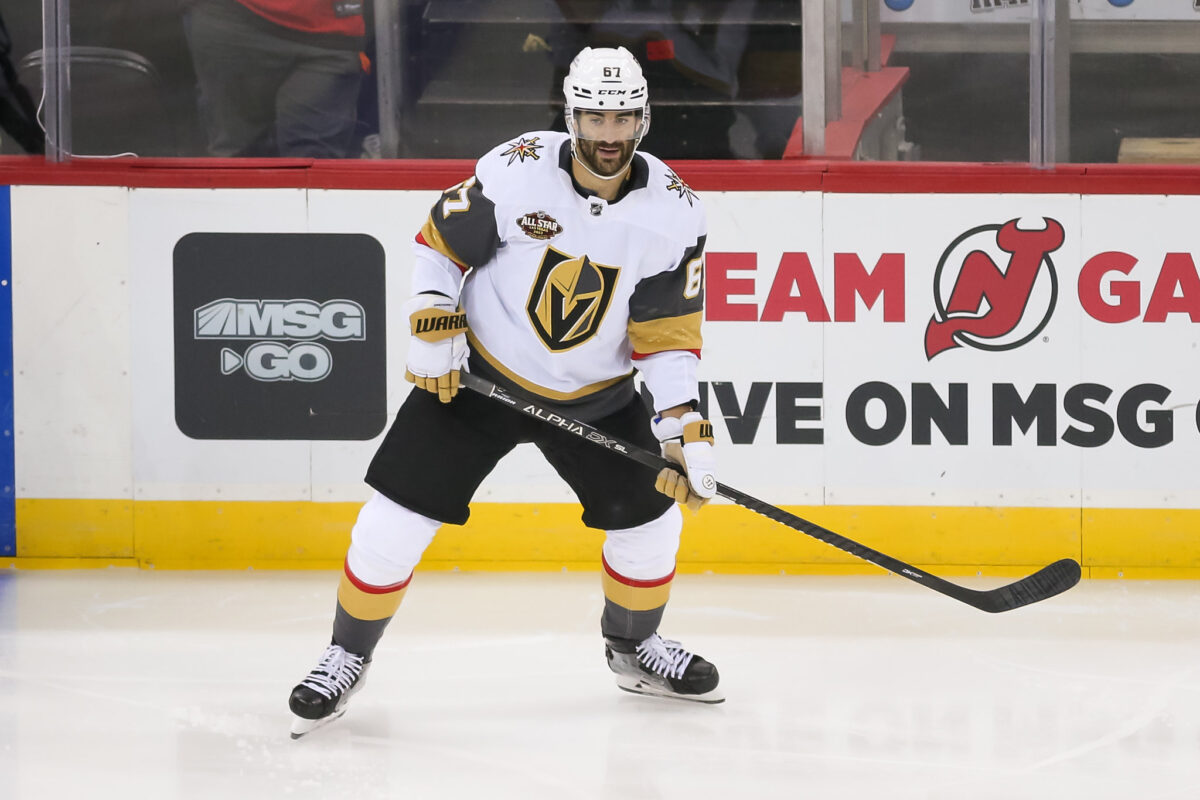
The Devils did play the Hurricanes tough in 2021-22 and could win some head-to-head matchups, but it’s quite unlikely they finish ahead of them in the standings. Never say never, but things would have to get really weird in the division for that to happen in 2022-23.
New York Rangers, 52-24-6, 110 Points
Additions: Trocheck, Jaroslav Halak
Subtractions: Ryan Strome, Andrew Copp, Frank Vatrano, Justin Braun, Alexandar Georgiev, Kevin Rooney
After reaching the Eastern Conference Final last season, the Rangers had a mostly quiet summer. They signed Trocheck to a seven-year contract to replace Ryan Strome as their second-line center. They also brought in Jaroslav Halak on a one-year deal to back up Igor Shesterkin after trading Alexandar Georgiev to the Colorado Avalanche.
Signing Halak and Trocheck adds 1.2 wins to the Rangers’ roster, but their offseason was more about what they lost. Through their subtractions, they removed 4.1 wins, with losing Copp, Strome and Vatrano hurting the most. Similar to the Hurricanes, they’re minus-2.9 wins worse than they were a season ago, but that’d still project them for 49 wins and 98 points without overtime losses.
Related: Devils 2022-23 Roster Builder: Time to Compete
However, Shesterkin, who finished with a .935 SV% a season ago — the seventh-best single-season SV% of all-time — is due for some regression. Goalies in recent history have multiple seasons above .930 (Sergei Bobrovsky, Tim Thomas, Tuukka Rask, to name a few), but none have done it in back-to-back seasons. Shesterkin is talented enough to do it, but he’d be the first to do so since Dominik Hasek in the late 1990s.
Still, the Rangers are a better team than the Devils on paper. Even if they don’t get steps forward from Kaapo Kakko and Alexis Lafreniere, they’ll likely finish ahead of New Jersey in the standings. It’d require some hard regression from Shesterkin to the point where it’d take the Rangers out of playoff contention, and I don’t remotely see him regressing to that point. They might not finish with 110 points, but they’ll still be in a playoff spot.
Pittsburgh Penguins, 45-26-11, 103 Points
Additions: Jan Rutta, Ty Smith, Jeff Petry, Ryan Poehling, Josh Archibald
Subtractions: John Marino, Mike Matheson
Were it not for Sidney Crosby’s injury against the Rangers in the first round of the playoffs, the Penguins would’ve likely advanced to the second round. The result was blowing a 3-1 series lead to the Rangers. But their front office didn’t blow it up and make wholesale changes, instead opting for a retool of their blue line.
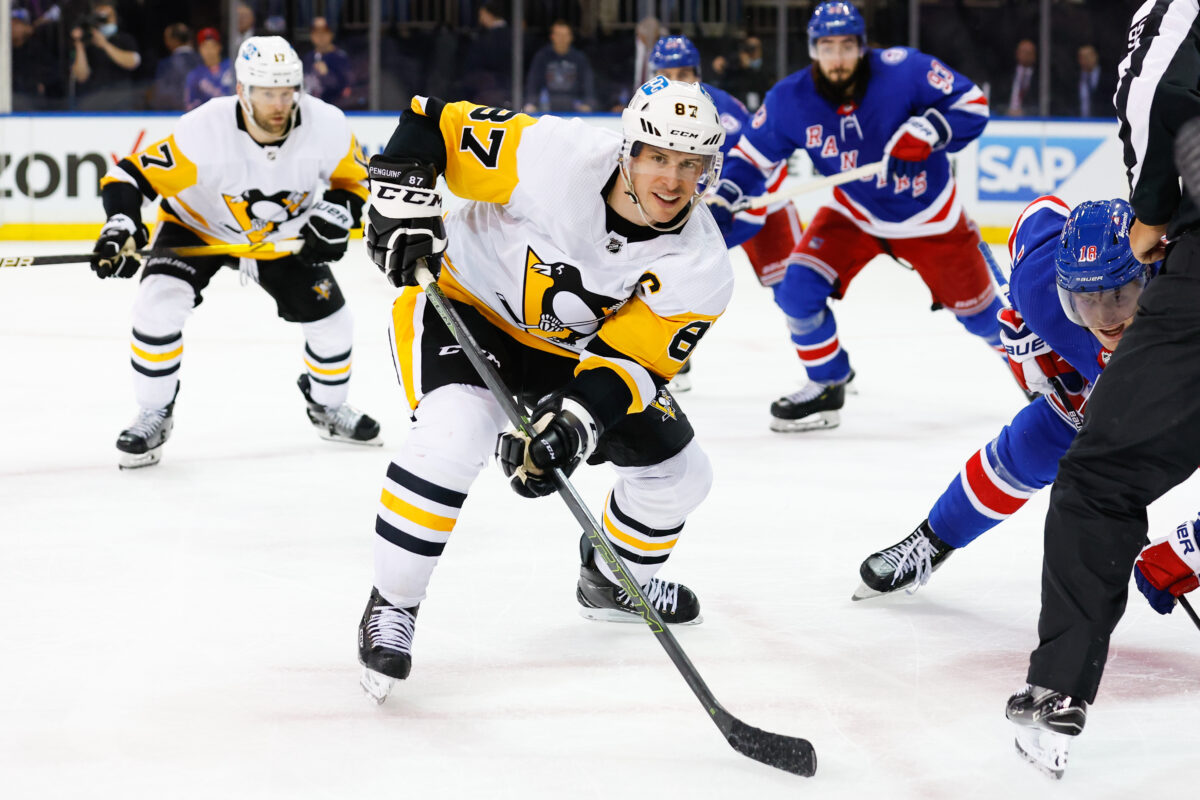
Out is Matheson, who went to the Montreal Canadiens in the trade for Petry, and Marino, who the Devils acquired in exchange for Ty Smith and a draft pick. With those moves, the Penguins added 2.6 wins while subtracting 2.3, so they’re essentially running back the same team; Archibald and Poehling are depth players and won’t add or negate anything from their roster.
However, it’s not impossible to think the Devils can catch the Penguins. Crosby, Evgeni Malkin and Kris Letang will keep the Penguins in the playoff conversation, and Tristan Jarry had a career year, finishing with a .919 SV% and stopping 6.58 goals above expected. With that said, they are the second oldest team in the NHL, with an average age of 29.31 years. If Petry and Smith don’t recover from their down years, their blue line overhaul could backfire and may lead to Jarry regressing, potentially putting the Penguins within the Devils’ reach.
Washington Capitals, 44-26-11, 100 Points
Additions: Dylan Strome, Darcy Kuemper, Connor Brown, Erik Gustafsson, Gabriel Carlsson
Subtractions: Vitek Vanecek, Ilya Samsonov, Michal Kempny, Justin Schultz
Because Nicklas Backstrom could miss most, if not all, of the 2022-23 season after undergoing a hip procedure, the Capitals brought in Dylan Strome to be their second-line center. He finished with 48 points in 69 games last season and a WAR of 1.6. Connor Brown is also a productive middle-six winger who was worth 0.9 wins in 2021-22.
Those two will help, but the Capitals’ most notable move was signing Darcy Kuemper, who finished with a WAR of 5.3 in 2021-22, in free agency. With that said, goaltender is the most volatile position in the game. In his prior season with the Arizona Coyotes, Kuemper was worth only 0.1 wins. The Avalanche were Stanley Cup champions in 2021-22, and he won’t be playing on a team as talented as them with the Capitals. He’ll likely have a strong season, but it probably won’t be worth 5.3 wins.
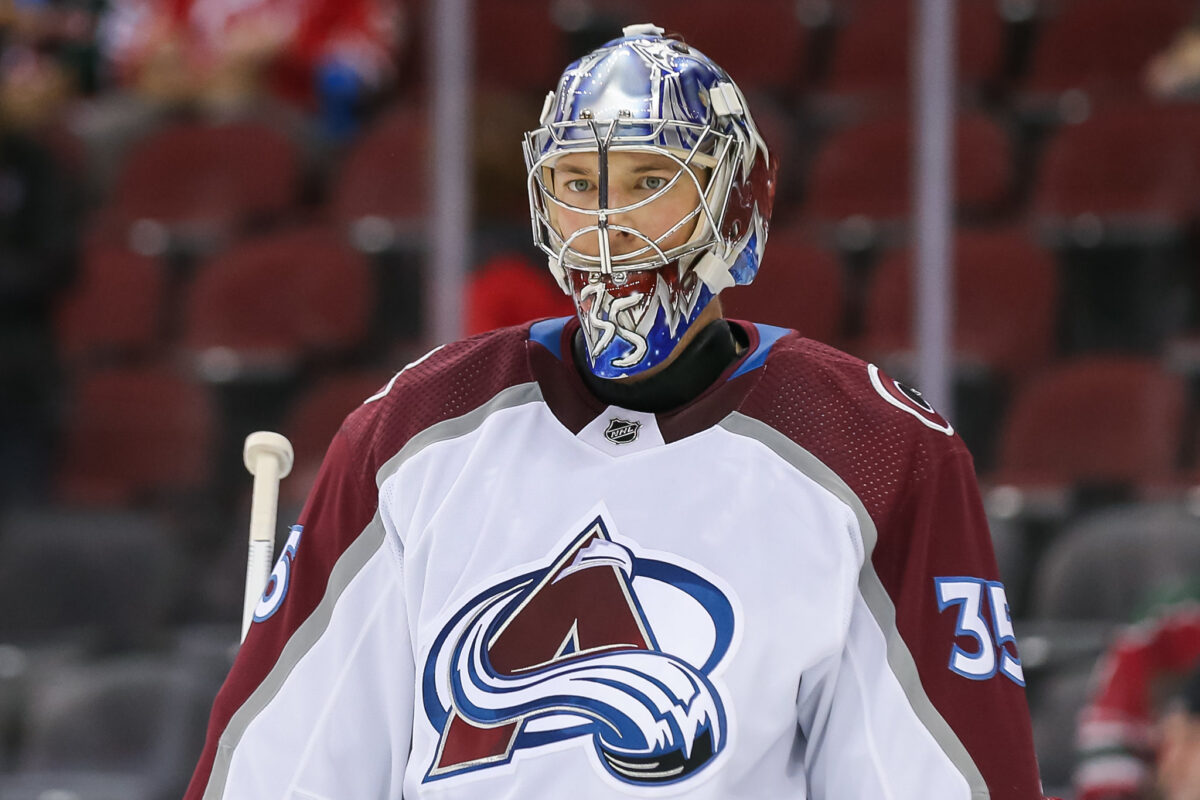
The Capitals will also be without Tom Wilson, who had knee surgery at the end of May, which will keep him out 6-8 months. Backstrom and Wilson not being available for the start of the season are significant losses. They’re a hard team to project because of that, and they have the oldest roster in the league, with an average age of 29.81 years. Like the Penguins, the Devils could be competing with them for a wildcard spot, but it’s difficult to say for sure.
New York Islanders, 37-35-10, 84 Points
Additions: Alex Romanov
Subtractions: None
The Islanders had a disappointing 2021-22, though some of it was beyond their control. A 13-game road trip to start the year while construction on UBS Arena was wrapping up, followed by a COVID outbreak shortly after they returned home, doomed their season before they had a chance to get going.
Still, it was a bit of a surprise to see Islanders general manager Lou Lamoriello not make a single notable addition other than acquiring Romanov from the Canadiens at the draft. Romanov is a decent enough middle-pair defender, but for a team that had trouble scoring last season, not adding some offensive firepower is a bit of a headscratcher.
The hope is they can get bounce-back seasons from Mathew Barzal, Kyle Palmieri and Anthony Beauvillier. But even then, Brock Nelson is due for regression after totaling 37 goals and shooting 21.2 percent, almost seven percent above his career average. It’s hard to envision where the goals will come from, and that’s a problem with a league that had a goal-scoring explosion a year ago and is trending toward offensive play.
On paper, the Devils have a much better forward group than the Islanders. Defensively, the advantage goes to the Islanders, but the Devils improved their blue line by adding Marino and Brendan Smith to the point where it can match the Islanders’ defense talent-wise. Ilya Sorokin is a top-three or -five goaltender in the league, so he can cover up a lot of flaws. But the Devils are the better overall team, and they should pass the Islanders in the standings this season if their own goaltending holds up.
Columbus Blue Jackets, 37-38-7, 81 Points
Additions: Johnny Gaudreau, Erik Gudbranson
Subtractions: Oliver Bjorkstrand, Gabriel Carlsson, Kevin Stenlund
The Blue Jackets had one of the more interesting offseasons. Signing Johnny Gaudreau to a seven-year contract was a coup and one that will surely improve their top-six, but the rest of what they did was a mixed bag. To shed cap space, GM Jarmo Kekalainen traded Oliver Bjorkstrand to the Seattle Kraken for a couple of mid-round picks. Bjorkstrand has averaged 30 goals and 60 points per 82 games over the last three years, so losing him will sting.
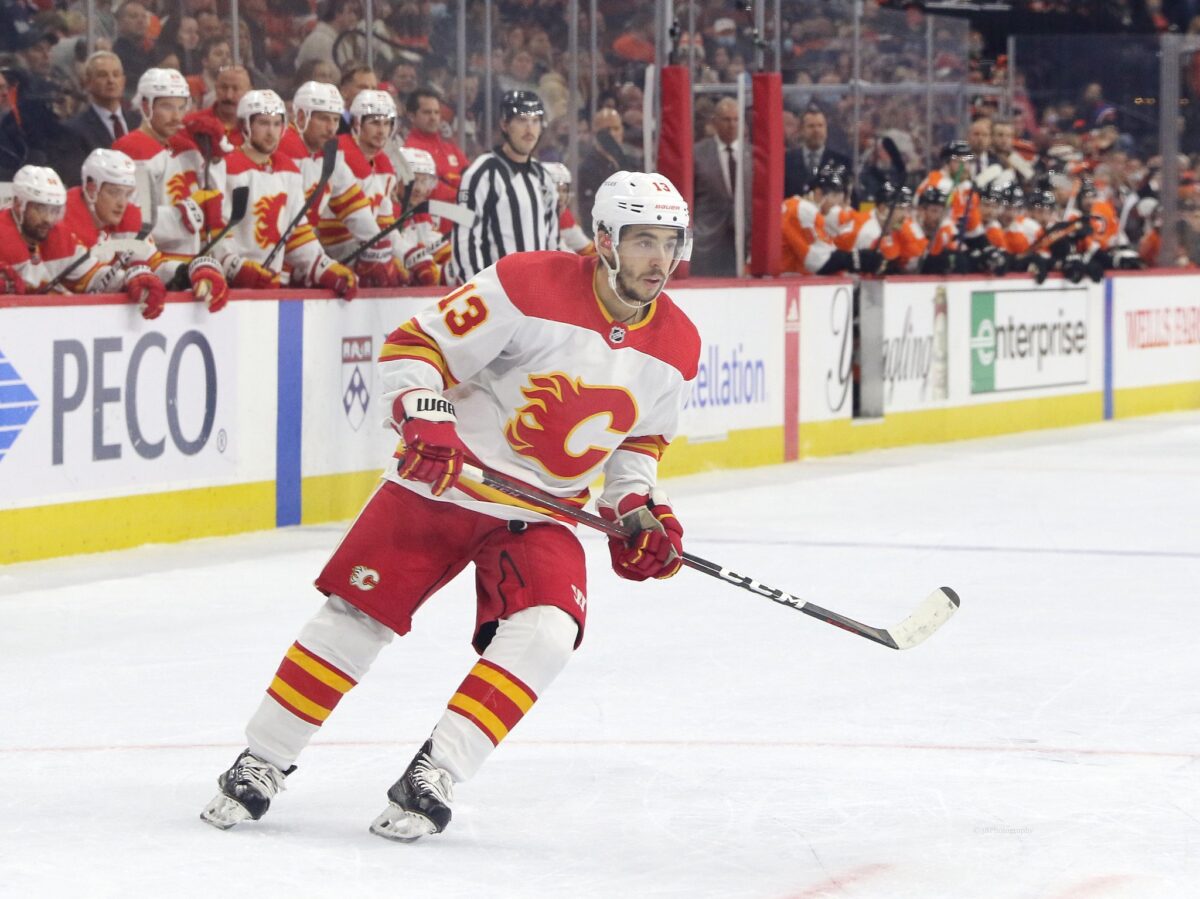
To bolster a weak blue line, the Blue Jackets signed Gudbranson to a four-year contract worth $4 million annually. He had a decent 2021-22 with the Calgary Flames, but it was in a third-pair role on a deep Flames blue line. He’ll likely have a more prominent role in Columbus, at least for a year or two before David Jiricek and Denton Mateychuk are ready for the NHL. But this is probably a contract that’ll age poorly on a bottom-feeder that’s suddenly up against the cap.
Are the Blue Jackets better than the Devils? Signing Gaudreau alone should improve them a bit, but adding Gudbranson and having to trade Bjorkstrand in a cap move lowers the bump they get by bringing in Gaudreau. They should be able to score goals with Gaudreau and Patrik Laine, but their goaltending and especially their defense remain question marks.
When it comes to overall talent, the Devils have the edge, specifically at center and on defense. They’re probably still an 80-85 point team, so New Jersey should finish ahead of them in the standings, though they probably won’t be too far apart when all is said and done.
Devils, 27-46-9, 63 Points
Additions: Ondrej Palát, Erik Haula, John Marino, Brendan Smith, Vitek Vanecek
Subtractions: Ty Smith, Pavel Zacha
Though they didn’t make a big splash, the Devils had a fine enough offseason. I’ve talked at length about the work general manager Tom Fitzgerald did this summer, so I’m not going to rehash much of it. But for the sake of context, let’s go over some of it briefly.
In adding Palát, Haula, Marino, Vanecek, and Brendan Smith and removing Ty Smith and Zacha, the Devils gained 5.3 wins based on Evolving-Hockey’s WAR model. That’s good, but five additional wins only get the Devils to 73 points, so what gives? They had a team SV% of .881 last season, far below the league average of .902, which cost them about 11 wins in the standings (22 points, give or take).
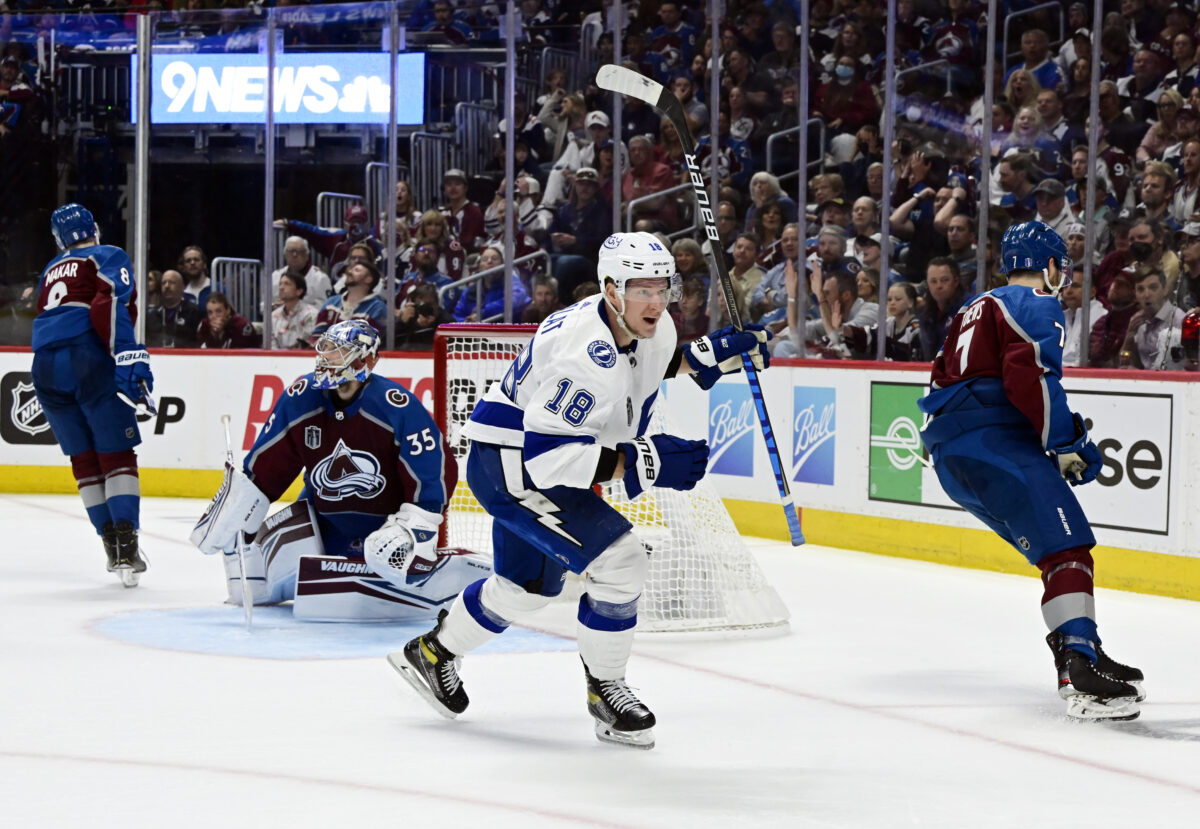
If all goes according to plan, Vanecek should improve their goaltending. He has a .908 SV% for his career, and if Mackenzie Blackwood is healthy and can at least provide league-average netminding, that’s where the Devils will make up ground in the standings. Count the five wins they added this summer with league-average goaltending (at a minimum), and they project as a 90-plus point team.
Philadelphia Flyers, 25-46-11, 61 Points
Additions: Tony DeAngelo, Nic Deslauriers, Justin Braun
Subtractions: Martin Jones, Oskar Lindblom
The Flyers’ offseason was…something. It wasn’t a secret that Gaudreau’s first choice was to play for his hometown Flyers. But since they’ve mismanaged their salary cap over the last few years, they couldn’t clear enough money to fit in a contract for Gaudreau. Instead, they traded for and signed DeAngelo to a two-year deal. He should help add some offense on the back end, and Braun should be fine as a third-pair defenseman.
Those moves won’t hurt or help the Flyers much, but signing Deslauriers to a four-year contract at a cap hit of $1.75 million when they’re already up against the salary cap will only handcuff them even more. New head coach John Tortorella might be able to right the ship a bit, but there’s only so much he can do with how the roster is currently constructed. Their blue line is among the worst in the league, and it will only get worse if Ryan Ellis isn’t able to play this season.
Related: 3 Devils Hoping to Repeat Last Season’s Success
The bottom line is the Devils should be a significantly better team than the Flyers in 2022-23. They have a better blue line, more scoring talent, and should have an advantage in net with Vanecek and Blackwood as their tandem. With the Flyers being a good bet to finish last in the Metro, the Devils shouldn’t have trouble clearing them in the standings.
Devils Should Play Meaningful Late-Season Games in 2022-23
The top four teams in the Metro from a season ago are still favorites to clinch playoff spots again, but the Devils should be in the race for the fourth or fifth spots by the end of the regular season. They might not make the playoffs, but they are now good enough to be competitive.
Also working in their favor is a much-improved Atlantic Division that should help chip away some points from last season’s Eastern Conference playoff teams. That should bring the playoff cutoff down from 100 points and into the mid-90s as it usually is. With a young and improved squad and some regression from last season’s 100-point cutoff being a decent bet, the Devils should find themselves playing meaningful games in the Metro in March and April if they take care of business as they should.
* * *
Advanced stats from Evolving-Hockey
